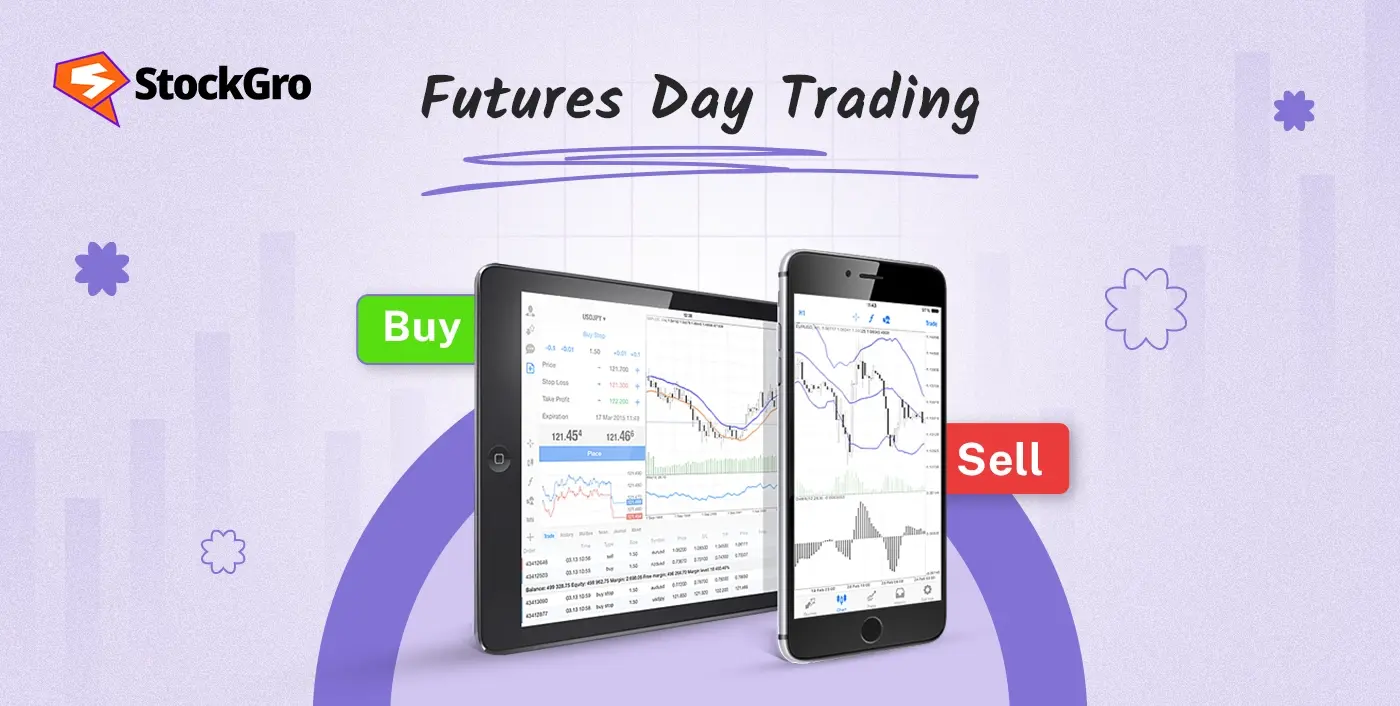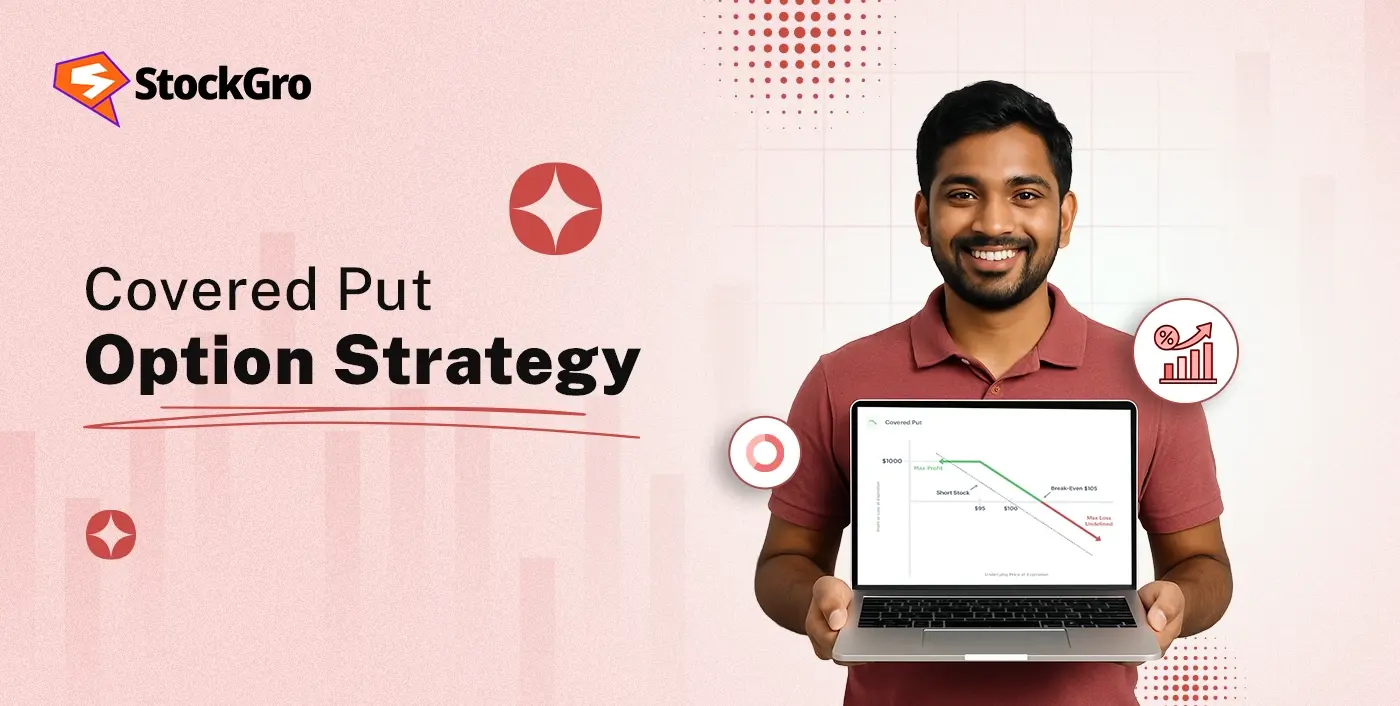
Every day billions move through global markets but most retail traders can’t capture even a fraction of it. The problem isn’t lack of opportunity, it’s that they’re trading the wrong instruments at the wrong time. Futures day trading gives you direct access to market momentum so you can trade both up and down. For beginners it can seem overwhelming but with clear strategies and discipline it becomes a powerful way to trade fast market moves. In this blog we will go into the details of futures day trading for beginners.
What is Futures Day Trading?
Futures day trading means buying and selling futures contracts within the same day to profit from short-term price moves in underlying assets. A futures contract is a legal agreement to buy or sell an asset at a fixed price on a future date but day traders don’t wait that long. In futures trading they enter and exit positions quickly, close all trades before the day ends to avoid overnight risk and focus only on intraday moves.
How Does Day Trading Futures Work?
The working of futures day trading can be understood through its core steps such as:
- Futures day trading is buying and selling contracts within the same trading session. The goal is to capture small intraday price changes while avoiding overnight risk.
- Traders usually select highly liquid futures contracts in indices, commodities or currencies. These contracts allow smooth entry and exit and even small market moves can be big because of the leverage involved.
- Futures trade on margin, meaning a small deposit controls a much larger contract value. While this increases the reward it also magnifies losses if the trade goes against you.
- Price movement during the day is often shaped by scheduled reports, global news, or sudden changes in supply and demand. Staying updated on these events is critical for intraday participants.
- Technical analysis is a common tool, with traders relying on charts, moving averages, and momentum indicators to identify possible breakouts, reversals, or continuation patterns.
- Risk management is part of the process. Stop loss orders are set to limit downside exposure and pre-defined profit levels are set to lock in gains when price objectives are met.
- Futures day trading requires continuous monitoring, sharp volatility can create opportunities in minutes but also can reverse in minutes.
Best Futures Contracts for Day Trading
As per the latest NSE data as of August 21, 2025 (11:30 AM), here are the best futures for day trading based on volume:
- NIFTY 50 Index Futures
The NIFTY futures contract is the most traded on NSE, with 24,525 contracts exchanged and turnover of ₹4,62,374.91 Lakhs. Open interest stood at 2,08,422 contracts, showing steady participation. The price moved 0.27% during the day, reflecting consistent activity. With high liquidity, this contract allows smooth buying and selling within the day and serves as a benchmark for the overall market.
- RELIANCE Futures
Reliance futures recorded 13,208 contracts in volume and a turnover of ₹94,308.42 Lakhs. Open interest reached 1,92,464 contracts, showing active participation. The contract moved up 0.86% during the session, making it one of the stronger performers of the day. Reliance often attracts strong interest due to its large weight in the index.
- TCS Futures
TCS futures also showed healthy trading with 10,610 contracts and a turnover of ₹57,579.86 Lakhs. The open interest was 1,53,567 contracts, reflecting strong activity. It gained 0.33% intraday, showing moderate but steady price action. TCS futures are considered useful for those who track IT stocks, and the balance of liquidity and movement keeps it in demand for futures day trading.
- BANK NIFTY Index Futures
Bank Nifty futures are popular for their fast moves and high contract value. On this day, they saw 9,432 contracts traded with a turnover of ₹1,84,827.42 Lakhs. Open Interest was 74,455 contracts. Prices rose 0.40% during the session. Because of its size and link to the banking sector, this contract stays in focus for traders who look at index-level activity.
- HAL Futures
Hindustan Aeronautics futures saw 8,333 contracts traded, with turnover of ₹56,118.38 Lakhs. The open interest was 64,265 contracts, reflecting consistent interest. The price moved up 1.01%, the largest gain among these contracts. This shows strong participation in a stock outside the large-cap IT and banking space, making HAL one of the standout names in futures day trading on this date.
Popular Futures Day Trading Strategies
The most common futures day trading strategies are as follows:
- Scalping Futures
This strategy focuses on taking advantage of very small and frequent price movements during the day. Positions are held for only seconds or minutes, with traders entering and exiting rapidly to capture multiple tiny gains. The appeal lies in the high number of opportunities, but it also demands constant attention, quick execution, and advanced trading platforms.
Scalpers must manage costs carefully since commissions and spreads can erode profits when trades are numerous. Many use depth-of-market tools, order flow analysis, and tick charts to make split-second decisions. While stressful, scalping can be effective for traders who thrive in highly active environments and maintain strict discipline.
- Breakout Day Trading
Breakout trading is built around identifying periods when prices are consolidating within tight ranges and then waiting for a decisive move beyond support or resistance levels. When such a move occurs with strong momentum, traders enter in the breakout direction, aiming to benefit from the surge that often follows. An important element here is volume confirmation. Without this, false signals are more common and may quickly reverse. Practical futures day trading tips often include waiting for a candle close or a retest of the breakout level before entry.
This patience helps filter noise while still capturing significant moves. Breakout trading is popular because it provides clear entry points, but success depends on quick reaction times and solid risk management.
- Trend Following
Instead of seeking short bursts, trend-following strategies align trades with the prevailing market direction. Once a trend is identified, traders aim to ride it until clear signs of exhaustion emerge. Tools like moving averages, RSI, and momentum oscillators help confirm strength and prevent premature exits. In the futures market, trends can develop quickly and persist through the session, making them attractive to disciplined traders.
Position sizing and trailing stop-loss orders help secure gains while giving trades room to breathe. This approach can be less intense than scalping, yet it requires patience and trust in the trend, making it well-suited to traders who prefer structured decision-making over constant micro-management.
Futures Day Trading Indicators
Futures day trading, much like intraday trading, often relies on technical indicators to interpret price behavior, as follows:
- Moving Averages: A moving average is a tool that smooths price data by calculating the average over a set period. In futures day trading, short-term averages like the 9- or 20-period help spot intraday trends and signal when momentum shifts, giving traders clearer entry and exit points.
- Relative Strength Index (RSI): RSI is a momentum oscillator that measures the speed and size of recent price moves on a scale of 0–100. Applied to futures day trading, it highlights overbought or oversold conditions during the session, helping traders gauge when price may reverse or consolidate.
- Volume Profile: Volume profile maps traded volume at each price level rather than by time, showing where most activity occurs. In futures day trading, this reveals zones of strong support or resistance, allowing traders to anticipate where price may stall, break, or reverse.
- Bollinger Bands: Bollinger bands use a moving average with two standard deviation bands to track volatility. For futures day trading, they identify when price is stretched beyond its typical range, often signaling potential breakouts or retracements within the trading day.
- MACD (Moving Average Convergence Divergence): MACD compares two moving averages to track trend direction and momentum. Futures day traders use it to confirm breakout strength or trend continuation, avoiding false moves that often appear in fast intraday setups.
Risk Management for Futures Day Trading
Risk in futures day trading comes from both price volatility and leverage, which makes a structured plan essential. The core practices include:
- Position sizing based on account equity prevents excessive exposure. Capping risk per trade to a small percentage of total capital helps sustain operations even during losing streaks.
- Stop-loss orders act as safeguards against unexpected reversals. Placing them beyond meaningful technical levels, rather than arbitrary points, aligns exits with actual market dynamics.
- Avoiding excessive leverage reduces the chance of rapid account erosion. In futures day trading, even minor moves can multiply into outsized gains or losses if leverage is unchecked.
- Tracking intraday volatility allows dynamic adjustments. During periods of high volume or news-driven swings, reducing trade size and widening stops can balance participation with protection.
- Diversifying contracts rather than concentrating trades in correlated markets helps minimize compounded risks. For example, crude oil and natural gas often move in tandem, so doubling exposure there can be misleading.
- Implementing daily loss limits creates a natural pause button. Once reached, stepping back prevents emotional trades that often follow consecutive losses.
- Reviewing trade outcomes regularly highlights recurring errors. Adjusting rules around entry timing, order placement, or exit strategy strengthens risk management over time.
- Maintaining a written plan covering capital allocation, acceptable drawdowns, and recovery methods keeps decision-making consistent, even during fast-paced sessions.
How Much Money Do You Need to Day Trade Futures?
The amount of money needed to day trade futures in India largely depends on margin rules set by SEBI. Unlike equities, there is no fixed legal minimum balance, but margins make the entry barrier high.
Every trader must place an initial margin essentially a security deposit to open a position. For day trading futures, the margin requirement is generally composed of two components: the SPAN margin and the exposure margin, which must be paid upfront. The SPAN margin is calculated based on a portfolio’s risk, while the exposure margin is an additional buffer. The exact amount of margin required varies depending on the specific futures contract.
On the other hand, for intraday trading, this is usually the higher of 20% of the contract’s notional value or the exchange-stipulated SPAN plus exposure margin.
Contract size plays a decisive role in determining the requirement. With SEBI’s increase in minimum derivatives contract size to ₹15 lakh from November 2024, the capital threshold has gone up sharply. For example, a contract worth ₹15 lakh requires at least ₹3 lakh as intraday margin, which is just the baseline. This figure only secures one position and does not provide any cushion for volatility or additional trades.
In practice, traders need far more than the minimum margin. A larger pool of capital helps manage losses, sustain multiple positions, and absorb sudden swings without forcing premature exits. While the exact figure depends on trading style and risk tolerance, entering futures day trading realistically involves several lakhs of rupees to maintain both flexibility and stability in fast uncertain markets.
Example: Futures Day Trade Setup
Let’s take an example of a Nifty Futures intraday setup. In the morning session, the contract trades within a narrow band of 22,000–22,050, showing consolidation. Around midday, the price breaks above 22,050 with strong support from higher trading volume. This breakout level then acts as immediate support, while the next resistance lies near 22,200, giving the trade a clear structure.
The trade can be planned in two simple steps:
- Enter near 22,060, slightly above the breakout, with a stop-loss just below 22,000 to manage risk.
- Target the resistance around 22,200, booking partial profits near 22,190 and moving the stop-loss to breakeven for the remaining position.
Such a setup shows how breakout levels and volume can be combined with clear entry, stop, and exit points to frame a futures day trade in a straightforward way.
Tips for Successful Futures Day Trading
Strong results in futures trading depend on discipline and preparation, and some of the most helpful futures day trading tips have been discussed below:
- Begin with a defined trading plan that outlines entry triggers, stop-loss levels, and exit targets. Futures move quickly, and clarity before placing orders prevents emotional decision-making.
- Focus on liquid contracts where volume and open interest are high. Liquidity ensures smoother order execution, tighter spreads, and reduced slippage, which is critical for short-term trades.
- Track the economic calendar carefully since futures often react sharply to scheduled data releases or central bank announcements. Staying aware of these events avoids being caught in unexpected volatility.
- Use position sizing rules that cap risk on each trade, such as limiting exposure to a small percentage of capital. This prevents a single loss from derailing overall performance.
- Combine intraday charts with higher timeframes to align trades with broader market direction. A five-minute breakout supported by hourly momentum has a higher probability of working.
- Review performance metrics regularly to identify patterns in wins and losses. Consistent evaluation builds awareness of strengths and weaknesses, enabling steady improvement in strategy and execution.
Conclusion
Futures day trading is all about price movement and market activity. Each contract reflects not just numbers but the participation and interest of traders on that day. Watching volume, price levels and activity around major instruments can give you insights. In this environment clarity of approach and focus is what makes the difference between a clean trade and one that doesn’t work as planned.
FAQs
Futures day trading refers to the purchase and sale of futures contracts within the same day for profiting from a short-term price movement. This means all positions are closed prior to market closing to avoid overnight risk so that traders can focus on quick moves and take advantage of intraday volatility.
Popular indicators are short term moving averages, VWAP, RSI, MACD and volume profile. These help to identify trends, momentum shifts, entry and exit points and confirm breakout strength which is critical in the fast moving futures market.
In India, the capital requirement depends largely on margin rules prescribed by SEBI. You need to maintain an initial margin which is usually 20% or more of the contract’s notional value. With minimum contract sizes now around ₹15 lakh for major indices like Nifty, realistic capital to start comfortably trading futures intraday runs into several lakhs of rupees.
When trading futures intraday, you need to maintain both SPAN margin and exposure margin. The SPAN margin reflects the risk in your positions and the exposure margin is charged as a safeguard. The actual margin requirement changes with each contract.
The most liquid futures in India are Nifty 50 and Bank Nifty indices, Reliance, TCS and Hindustan Aeronautics futures. These have high volume and open interest and hence tight spreads and easier entry and exit which is good for day trading.
Yes, day trading futures can be profitable. You must develop and use a strategy, maintain discipline, and manage your risk properly. But one must be patient and keep gaining experience as most new traders lose due to leverage effects and drifting markets. Eventually, ongoing success hinges on staying committed to a learning process and being able to change along with the markets.
Major risks include the following: extreme volatility and the quick loss of capital; the wide use of leverage, which magnifies even small downswings in price; sudden news, be it economic, or geopolitical, affecting price; and loss of well-conceived trading rationale, often compounded by emotions and pressure. Risk can be curtailed by adhering to strict stop losses, limiting position sizes, and diligently planning trades.
Common strategies include scalping, breakout trading after price consolidation, preferably with volume confirmation; and trend-following, often using moving averages and momentum indicators. Better odds for success in swift markets are attained when the trader combines these technical tools with position sizing and stop losses that are trailed, along with patience.

